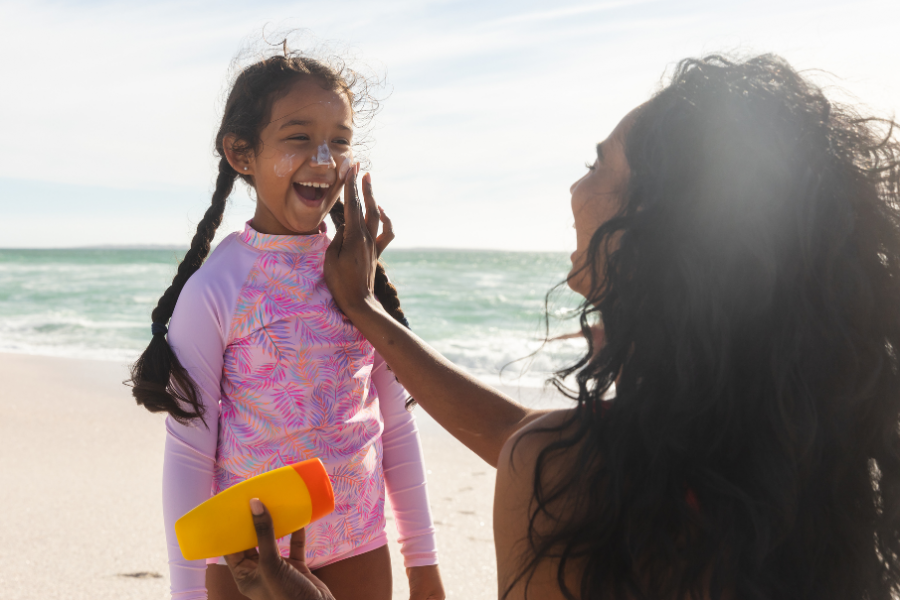Exposure to the sun for a long time can cause skin cancer. UV radiation from the sun is the main reason for this.
It is a must, from a child to the elderly, to protect skin from UV rays. Many of us are using either sunscreens or sunblock. But not everyone is aware of the correct product or the correct usage.
Firstly, UV rays are radiation emitted by the sun. It has more harmful sides than benefits. UV rays have a role in forming vitamin D that helps to reduce cancer cell growth and for healthy bones and teeth.
The ozone layer is a shield on Earth's stratosphere and absorbs the ultraviolet rays emitted from the sun. An increase in the usage of carbon monoxide and carbon dioxide is creating holes in the ozone layer.
This hole formation has caused the UV rays to pass into the Earth in more than the necessary amount. Suntan, melasma, and skin cancer are the most frequent problems caused by this phenomenon.
Over-exposure to the sun has several risk facts - premature ageing of the skin and skin cancer, risk of blindness of the eye, melanoma, melasma or hyperpigmentation and skin irritation.
Protecting your skin
Sunscreens protect our skin from Ultraviolet radiation A (UVA), and sunblock prevents damage from Ultraviolet radiation B (UVB).
Sunscreens absorb the UV rays and protect our dermal layers chemically. Dermatologists recommend using sunblock for those who have skin irritation to chemicals. Sunblock creates a layer on our skin and protects our skin from UV rays physically.
UVA rays are radiated more than UVB. UVA rays are responsible for instant tanning, and UVB rays are responsible for late tanning of the skin.
Sun Protection Factor (SPF) is a term we often see on the packaging of sunblocks. It means the amount of protection provided to our skin from the harmful UV rays. We should try to use sunblocks with higher SPF.
SPF 30 means it can protect our skin 30 times more from UV rays. SPF only protects from the UVA rays, and the sunblocks with SPF pa++ give protection from both UVA and UVB rays. We need to reapply sunblocks every 20-30 minutes when we are open to the sun.
Try to use a shade like an umbrella while moving in the sun. Wear sunglasses that block both UVA and UVB rays.
Wear clothes that cover your arms and legs. Avoid indoor tanning, which involves applying a cosmetic tan using a UV-emitting device in tanning beds, athletic facilities, spas, hotels, and gyms.
For younger users, indoor tanning is risky. Indoor tanning in early adulthood is associated with an increased risk of melanoma skin cancer. Lastly, consider the factors to protect your children from UV rays as their skin is more sensitive.


